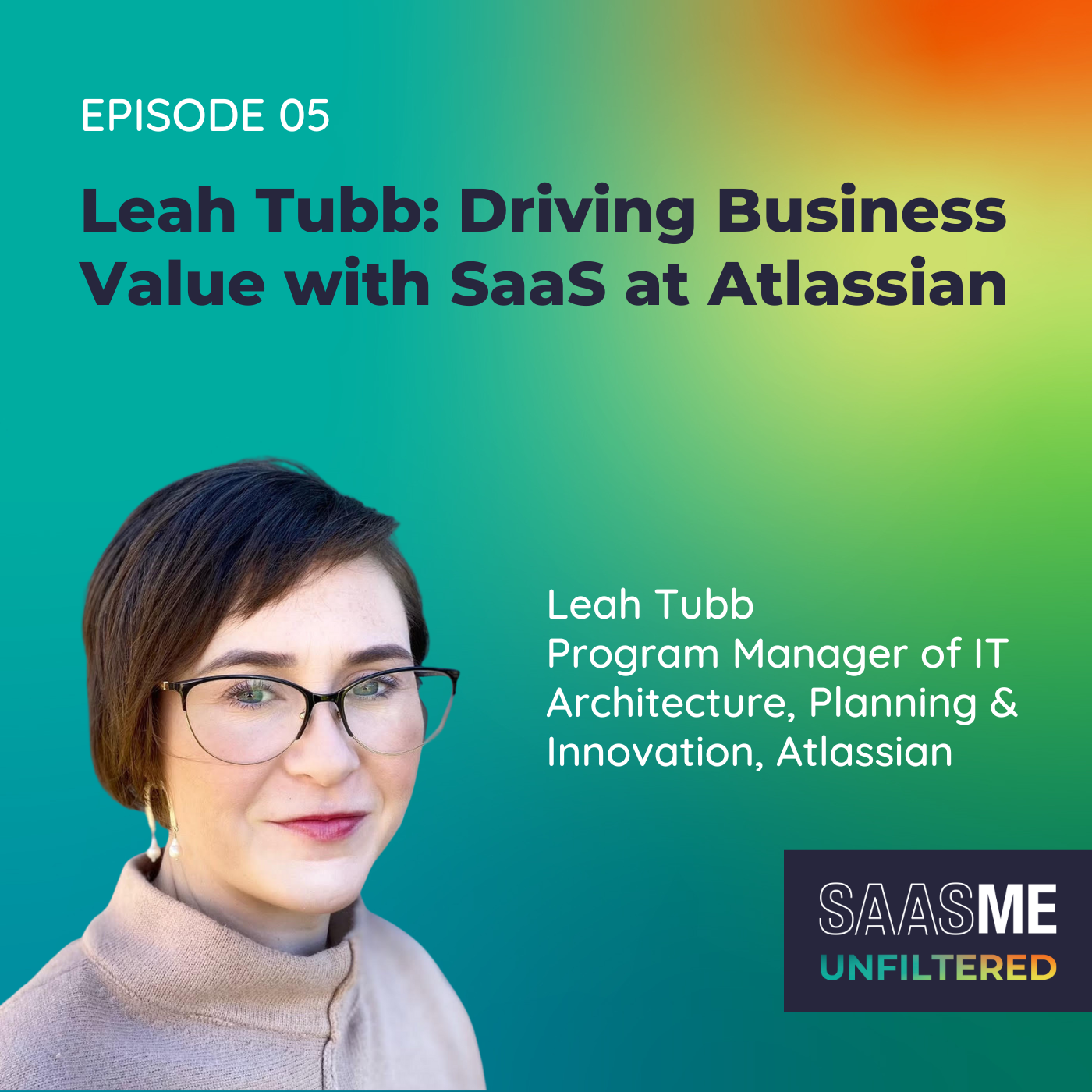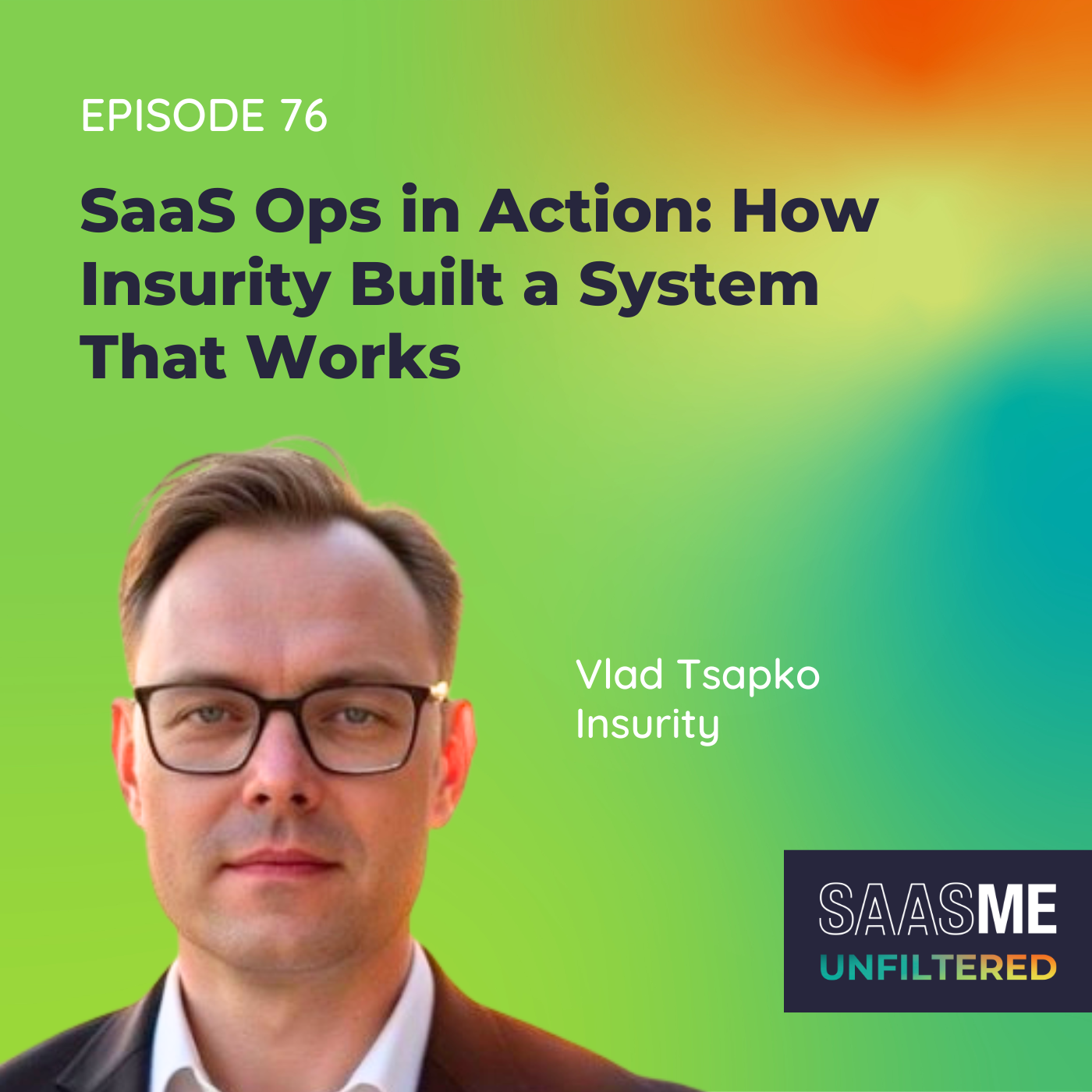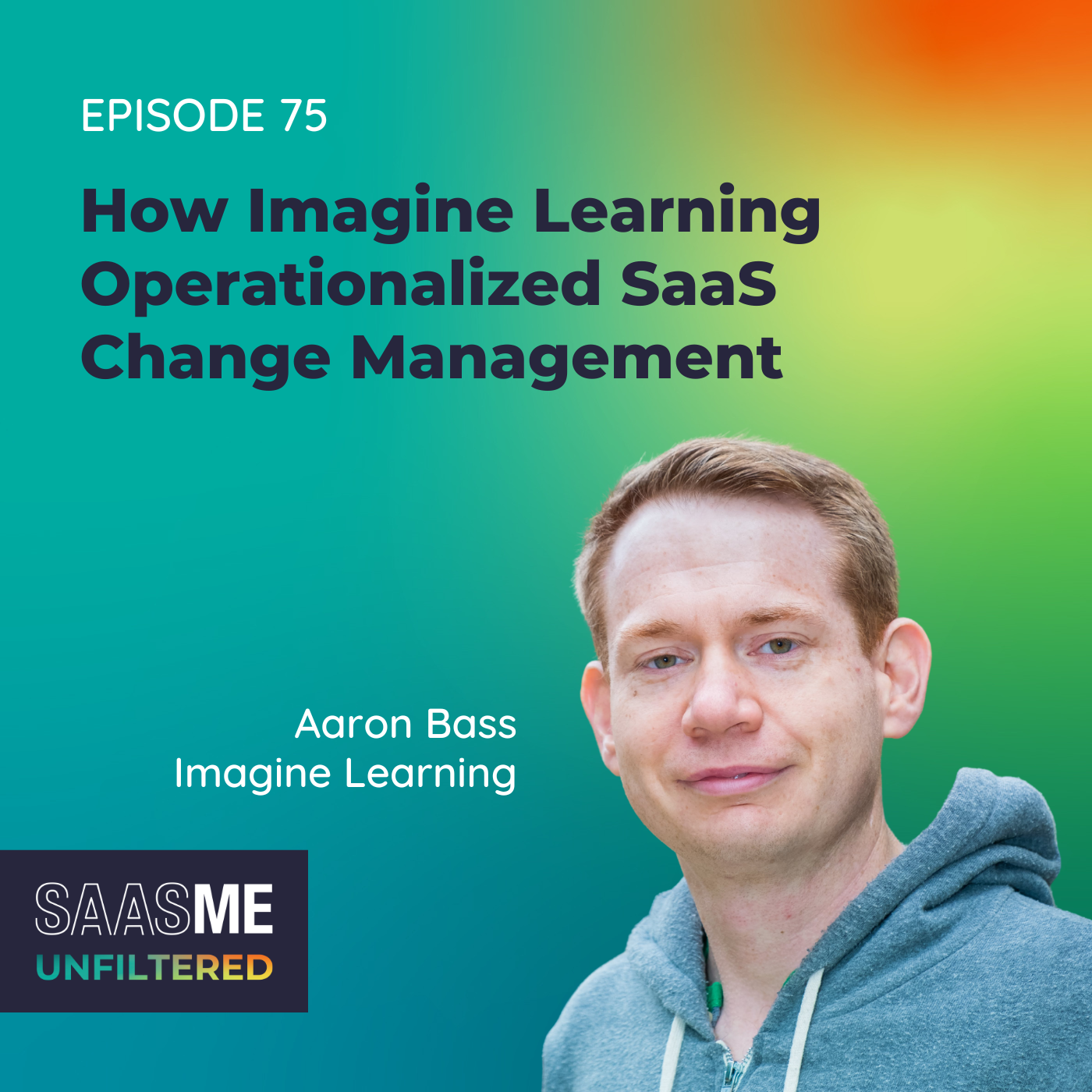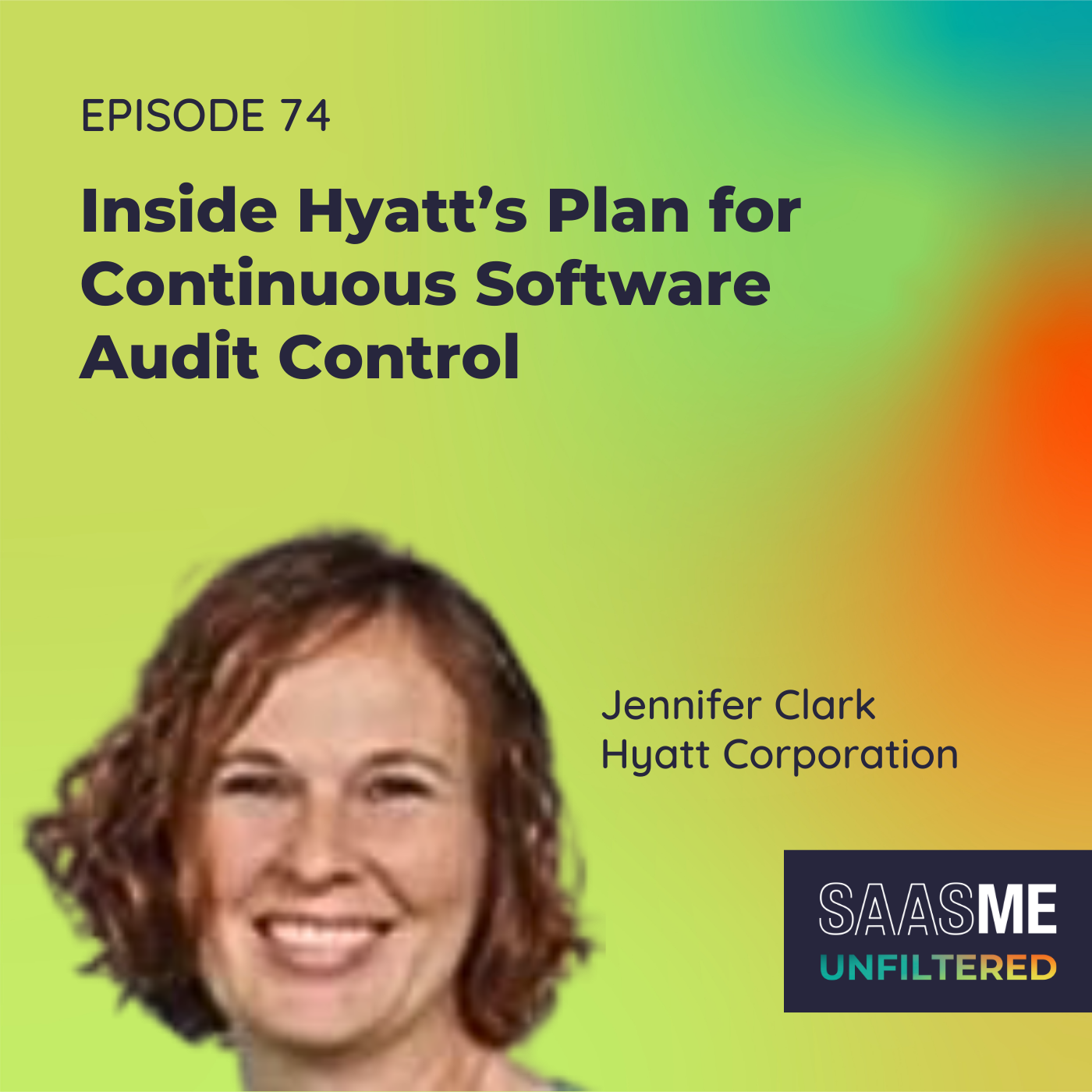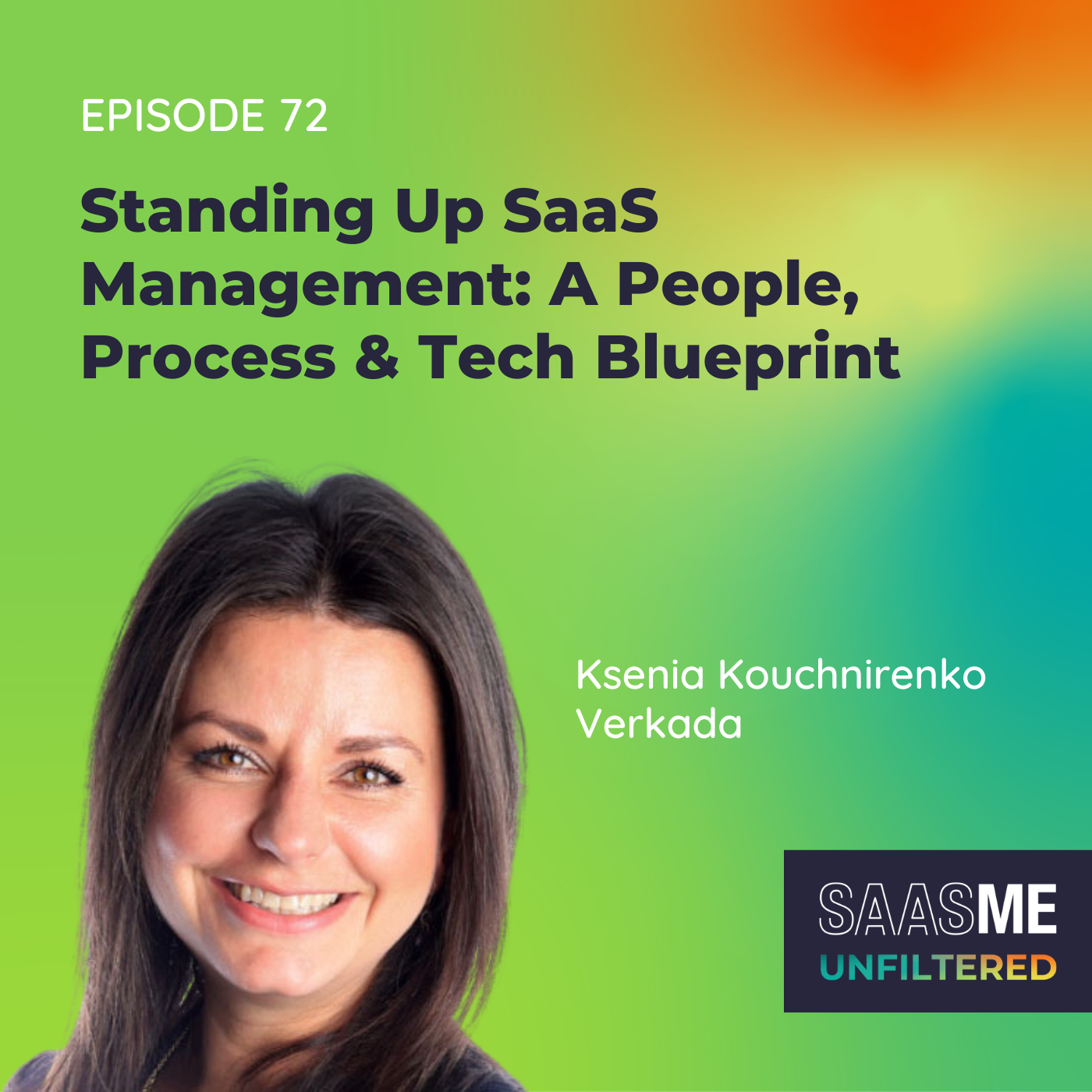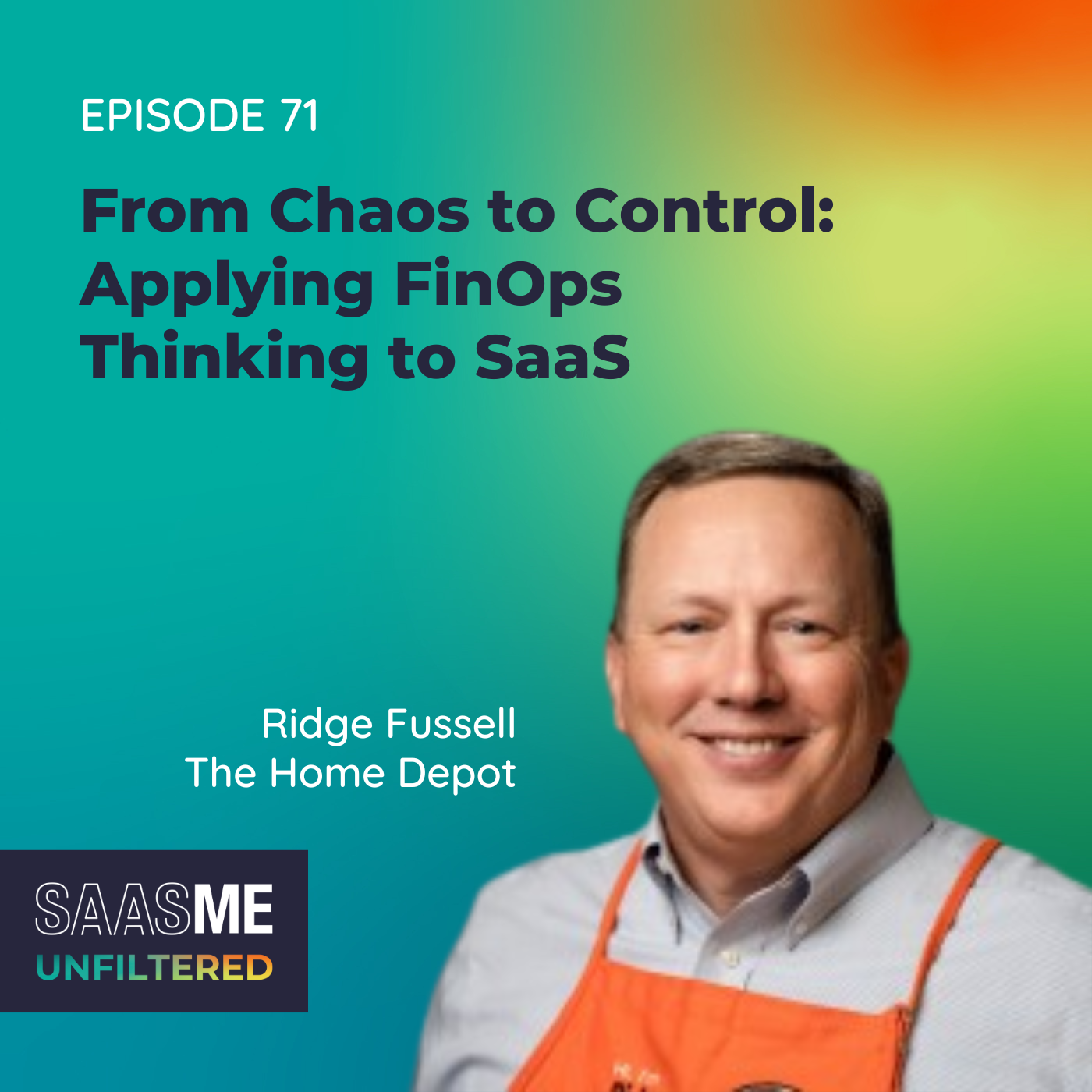Leah Tubb: Driving Business Value with SaaS at Atlassian
- 0.5
- 1
- 1.25
- 1.5
- 1.75
- 2
Leah Tubb: And the reason that this all started and came about was our CIO asked, " What's our SaaS portfolio?" And I thought we could answer that pretty easily but then, as we started to look into it, we started to say, " Okay, well, how many applications do we have? We think we know, roughly, at least what we have going through AP and expense. And then, what's the compliance for all of those? Who has access to all of these different gateways and for all of the applications? What's the risk associated with their data? Are they meeting their contractual SLAs? What's the spend, what's the usage, what's the contract?" It just kept going and going and going and each of those were a layer that we were trying to figure out.
Cory Wheeler: Hello, hello and welcome to SaaSMe Unfiltered: The SaaS Management Podcast. The show with give it to you straight, real life advice from pros knee deep in SaaS every single day. SaaS management superheroes just like you. Hello, we are back for another episode of SaaSMe Unfiltered. So excited to have you join us, I'm Cory Wheeler, co- founder and chief customer officer at Zylo.
Ashley Hickman: And I'm Ashley Hickman, manager of customer success at Zylo.
Cory Wheeler: Okay, we have a very interesting and informative guest with us today. She has a very interesting background. It started with a passion for chemistry, of all things, that was then channeled into materials engineering. She worked as a Navy contractor for several years putting that directly into practice but that was then channeled directly into being able to make programs that run smoothly into technology where she found her way to Atlassian working with both IT strategy and business operations and she's played a major role in helping IT run like a business at Atlassian. So, joining us today is Leah Tubb, the program manager of IT architecture planning, and innovation at Atlassian. But all of that said, she's just a SaaS wrangling badass and I think I'd rather be able to introduce you that way. Leah, welcome to the show.
Leah Tubb: Thank you so much, Cory.
Ashley Hickman: Well, really excited to have you, Leah, would love to really dive into things today. Had the opportunity to chat with you before this, really excited to do a nice overview around everything that Cory mentioned that you've really built. I know Atlassian is growing rapidly, you're now definitely a large enterprise with plans to just continue to expand. So, would love to kick off our conversation today around when did scale catch up with Atlassian? That, oh, shit moment for Atlassian?
Leah Tubb: Well, there's been a couple, oh, shit moments here.
Cory Wheeler: You think?
Leah Tubb: I think. The good thing is, back in 2017, our person, John Stame, set up an enterprise architecture function here at Atlassian and he started sounding the alarm of, " Okay, we're moving everything to the cloud. We need to set up a practice here and we need to start looking into this." And he started documenting that this is a big deal, we need to add some resources here to support it and it chugged along. We brought on Zylo and then just chugged along and not a lot was done because architecting other stuff and there wasn't SaaS management folks dedicated to it to focus on it. Then, in March 2021, last year, doing my final interviews with Atlassian, I was talking with my future manager, Sunny, and it was like, " Okay, what are you going to be working on?" And he's like, " Oh, SaaS management," and I was like, " Okay. What does that mean for you guys? To what extent?" He's like, " Well, we know it's about a quarter of our spend. I can't really tell you much more beyond that. I think I know all the vendors and I think I know most of the applications, I can't confidently say that we have all the governance down for it, I can't confidently say all the folks that are accessing it and I can't confidently say that everyone knows what everyone else has thing." I was like, " Okay." He's like, " So, you're going to start digging into that," and I was like, " All right, sounds fun." And then it was how big of an issue is this? How many do you think that we have? And it's over 600 for across Atlassian and I primarily focus on, right now, those in IT that are either IT managed or IT funded by IT cost centers. And so, we have about a nice little number of 250 from that and we are slowly starting to expand into the areas of non- IT that we're still seeing come in that we know that we should have eyes on as well.
Cory Wheeler: Those statistics certainly are really good data points for you to be able to build that function internally. Two hundred and fifty applications managed in some way, shape or form by an IT organization is pretty progressive. Typically, IT is managing just birthright apps like your Google or your Salesforce types of applications. So, Atlassian really taking a front seat to being able to better manage a lot of your more strategic apps in the organization is super cool. So, taking this even a step further, you recently gave a presentation of your SaaS management function, the outcomes, the inception of the program at Atlassian Team 22. I'd love for you to be able to provide a little bit of an overview of what that pitch was, what that presentation to your internal and external stakeholders was around SaaS management.
Leah Tubb: Oh, goodness. So, yeah, the onion.
Cory Wheeler: Let's go.
Leah Tubb: We definitely called it peeling back the SaaS onion with Atlassian IT. And the reason that this all started and came about was our CIO asked like, " What's our SaaS portfolio?" And I thought we could answer that pretty easily but then, as we started to look into it, and it was our team on strategy and business operations closely coupled with our enterprise architecture team as well. And we started to say, " Okay, well, how many applications do we have? We think we know, roughly, at least what we have going through AP and expense." Then we also dug into, "" Well, how many of those are multi- tenant?" So, if we actually have, maybe, one application that multiple people are using, do we count those as three or just one? And then what's the compliance for all of those? Who has access to all of these different gateways and for all of the applications? What's the risk associated with their data? Are they meeting their contractual SLAs? What's the spend, what's the usage, what's the contract? It just kept going and going and going and each of those were a layer that we were trying to figure out, okay, do we prioritize this right now? Do we need to focus on this right now? And we were looking across six plus different data sources and we built this big ass G sheet and my colleague, Chitra, makes it work and gets me the data and I don't know what I would do without her because we're pulling in this information. But managing that kind of data in a G sheet stinks and you know what can manage data a lot better? A database. And so, we started saying, " Huh, we should probably look at what options we have out there," and we found out that we had a new acquisition at Atlassian called Insight. It was from a company called Mindville Insight and it was integrating with Jira and it was historically a CMDB and for on- prem assets. And we're like, " Well, we can connect APIs to it and so we could have information being exported from Coupa, from Zylo, from Workday and we could have all these items coming into one spot and then we can create a single pane of glass for each SaaS application." " Huh, that'd be really cool." And so, then, we started playing around with it. Is this possible? Insight has never been asked to do this and we haven't seen anyone else in the market do this, of bringing these multiple imports into one spot and then display it for a single pane of glass. And then, when you bring it into Insight, it's inherently part of Jira Service Management and then we can create tickets off of these things. Then I can say, " Hey, Cory, I see that your tier here is a tier two. Well, I noticed that's your SLAs and you keep failing, sounds like you might have a contractual issue and you need to talk with your service provider." So, we can start answering those questions now that we're bringing it all into one spot instead of, Cory, the service owner saying, " Okay, here's my tier, here's what it needs to match up to, then here's what my contract says, here's my procurement person, how do I get to talk to them?" It's like, " Nope, now we can create ticketing and alerts and say,'Cory, this is failing over here. Oh, guess what? You can request money back but you have to do it within 72 hours to get it done.'" And now we can automate that whole process and make sure that Atlassian can reclaim their funds from contracts that they have said, yes, we're going to be online this much of the time. But if we're not, notify us in 72 hours, now you can.
Cory Wheeler: How do you still connect SaaS management and enterprise architecture as you guys move forward?
Leah Tubb: So, we root everything in business capabilities. We want to know, whether it's people, process, technology and information, how it aligns to business capabilities because then we know exactly what it's doing for us and how are we driving business value for Atlassian. How things come together, where do we have redundancy where redundancy is good and where do we have redundancy where we can start doing rationalization? And so, that's how we bring it together is through business capabilities and the person who, when I interact from a SaaS management perspective, I talk with the solution architects of our different product teams. So, I have my human resources solution architect, my finance solution architect, my workplace tech solution architect, my legal solution architect and I tell them, " Here's what I'm seeing coming into your space, are you aware of this, number one. And, number two, what's your customer? Have they gone through this full process? I see they haven't been processed through our internal governance process, can you communicate with them that it needs to go through here, especially based on the data?" And so, then, we can have those, we promote those discussions between our product teams and their business partners and say, " There's all these applications that are going on, here are some that are managed by the business, here are some that are managed by IT. Let's have a discussion as to are those the right ones, are they actually serving the needs that they need to serve or what can we do better? Where are the shortfalls and let us help you make them better." And those also come up with discussions of the business saying, " Oh, yeah, every week I'm uploading this new CSV document to this one application," and our architects say, " Oh, we can automate that for you." And it's like, " Wait, you can save that time of me downloading, cleaning it?" " Oh, yeah, we can automate that easily." " Oh, okay, great." And then you're driving that partnership between business and IT and, for us, that's the real core of why we're here.
Cory Wheeler: I like that. The business relationship, the partnership from IT, being a service organization continues to be a major focus for a lot of the customers we're working with. So, you gave a lot of great examples of how you're driving that collaboration, efficiency in the business. When you take a step back, what do you view as the big rocks of your SaaS management program?
Leah Tubb: Well, so, as I mentioned, maximizing business value is number one and how we're doing that is really looking at security. We want to make sure we understand where all of Atlassian data is. We want to make sure how it's accessed and that the company that we're sharing it with has the right controls in place. And so, we go through an internal process here that we call our supplier business case review and we look and make sure that, yes, all of these applications that we have in the portfolio have actually been processed through here. Or, you know what, this is one where you're just going on and you're just reading insights and you're not actually communicating data back and forth, that's okay. You know what? You don't actually need to do an SBCR but, however, thank you for telling us that it exists, that's great. Another one is contracts. We really care about making sure we have the right leverage when it comes to our contracts and we have the right contracts in place for Atlassian. We are really fortunate that we're not trying to drive down spend as fast as possible right now, we just want to make sure that the spend that we have is the right spend. And is Atlassian set up for success and executing those contracts? Do we have the right people partnered to enable the business to actually set up an implementation? Well, when you have a business partner who's buying it and they're like, " Well, I actually need Workday to get into that tool so I can do my job faster." Well, if you're going to connect to Workday, let's have a conversation with IT and let's enable that connection instead of you trying to go around different ways to get the data, let's actually make it work for you. So, we want to make sure that our contracts are set up where IT is involved and they need to be involved, where the business knows where you can do this by yourself, we're always here to help if you need to and, actually, do we have the right size for those contracts? So, if it is actually just three people accessing it, well, why did we buy a subscription for 500? Let's downsize it. Or, if it's only three people when we really need to focus on this tool and it should actually be more like 50 people, how can we push our teams to focus on it and to drive trainings there to show them the value of that application? So, we're looking at that as well when it comes to contracts and then discovery. With discovery and looking through Zylo with our financials, we can see what's coming in and what's being spent. There's a lot of overlap, oftentimes, with business capabilities and we're able to say that, " Look, you have these 10 tools that do roughly the same thing. Sure, they might have their specialties in one area but, if we're really focusing on this business capability of chat with an external source, let's choose one tool and try to adopt that across." And then the teams might say, " Oh, yeah. You know what? That tool can do the same thing." And now, we're getting into the conversation of let's bring three teams to one tool and then we can get a better contract too when we have more folks focused on one tool instead of 10 tools for... I've seen it for seven teams, they have multiple tools on one team. So, how can we just make it better from a discovery point of view and laying it all out instead of trying to have it hidden?
Cory Wheeler: What I love about your program and what I talk about when I talk openly about some of the wins that our customers have had is, every single program that has SaaS management is all about optimization. However, the majority of those programs are focused on cost optimization and streamlining especially now as we're going through an economic shift here in the US. Atlassian is also focused on optimization but very differently. Optimization of your tooling, optimization of your processes, optimization of licensing behind that and it's all to drive efficiency within your business. And I think that's a very strategic way to look at managing SaaS inside your organization and something that Atlassian has done incredibly well. That Team 22 presentation was phenomenal, we're going to drop that link in the show notes. So, anybody listening, jump into the show notes, it's on YouTube right now, you can check it out and I'd invite you to watch that end to end.
Leah Tubb: Yeah, and I really want to say that that was a team effort primarily with myself and my colleague, Pete Lindsey, who's an enterprise architect in IT. And then, also, we have our inside Atlassian team who focuses on using Atlassian tools and reporting back to the product of how we can do things better. We're pretty lucky where our products are, a lot of times, products for IT and, well, they have a modern enterprise IT right at their fingertips that can test their products. And then we also partnered with one of our presales engineers, Cathy Davey, who built out our whole demo environment for us and she's the one who got in there, understood our requirements and said, " Oh, we can totally build this. I haven't seen it before but I think we can make it work," and she made it happen.
Cory Wheeler: That sounds like fun. Boy, that sounds like a ton of fun.
Leah Tubb: The innovation opportunity at Atlassian is my favorite part. And it's so welcomed and it's so encouraged by leadership to, " Hey, you think that could work? Great. What can we move off your plate so you can focus on innovating in that area?"
Ashley Hickman: I love hearing that. I love that you have three main pillars that are driving, ultimately, your goals, your vision for what the SaaS management practice ultimately is around security with contracts and then discovery that you mentioned. So, I love that you have driving that and also you have a tremendous amount of support from the organization, from your team members, love that, and also, really excited to see, ultimately, that end product in Insight. But in terms of getting all that to happen, I know that sustaining, ultimately, a practice and sustaining, really, anything that you're trying to do in the business is really important so that you get those results around security, you get those results with contracts and, ultimately, discovery. So, would love to be able to share with our listeners today a little bit about what Atlassian calls your operational rhythms. Something that, in terms of, not only standing up this practice, but how you sustain it on an ongoing basis.
Leah Tubb: Yeah. So, the past year, so since I joined to maybe a couple months ago, it was really about what do we need to know and what exists in this SaaS space and how do we start to unravel that onion, maybe, start cooking with it a little bit. And I feel like we finally reached a point where we know what steps need to be done on a regular basis and that's what we call our operational rhythm. So, we go through what's coming in, what's going out. We look at payments in Zylo, we look at what we're also discovering in our internal SAML tool of, hey, this thing was brought on and we have single sign on but it hadn't gone through our internal governance process so let's put it through there. So, we want to know what's coming in and also what's going out, what do we know the business wants to deprecate and what can we, maybe, merge with another tool. Spend generally drives our prioritization just for the sheer fact of, if an application has made your spend attached to it, it generally had to go through some acceptance from leadership to be approved and then it also says, generally, how much it's connected to the rest of our platforms. All these things promote the collaboration with the business to make sure that we're able to have those discussions of, hey, you have three white boarding tools, looks like you have 100 users in one white boarding tool and maybe five in another so let's see if we can move those folks over.
Ashley Hickman: And one of our core values at Zylo is big, audacious goals. That's something that we work on internally, that's something that our customers come to the table with, are these big audacious goals. And people can have goals all day but they need to have a plan in place to reach those goals and so that's why I really wanted to dig in on your operational rhythms because that can be really helpful. I love hearing all this and also for people who are interested in how does Atlassian make it work for them, right?
Leah Tubb: Well, we track our operational rhythm in Jira Work Management.
Ashley Hickman: inaudible
Leah Tubb: We've done and it's imagine a spreadsheet turned into a table and a database that now you can also link to the rest of your Jira fields and still do your same reporting from your other Jira fields, it's cool. And so, we track our operational rhythm, once a month we upload here's the steps that we need to do each month. So, we review prior months payments, we look at recently discovered applications coming in from, like I mentioned, SAML and then also AP and expense. We want to look up and see which apps have no spend anymore or ones that we saw in the past year but they've gone away so then we can contact the owner saying, " Hey, is this still around or should we be expecting a big payment? What's going on here?" And then we also look at apps with no spend and then apps where we should not have spend, apps where we've been told that they're going away and, wait, what was that payment? Why did we just get charged for that? We should have terminated the contract. And then we make sure that everything that's been expensed, depending on the level of the data that's in there, also goes through our internal process of governance. So, we are really big on shadow IT acceptance here at Atlassian and IT does not want to be a bottleneck, is not a bottleneck. If you say you need a tool to make your job easier, you can get it and you can ask for IT to help you get it or you can get it yourself and put it on your computer. And, when it comes down to connecting that tool with other tools, that's where you'll have some limitations but we're encouraged to, hey, if you need to make your job easier, go for it. And so, we also want to know that those items that are shadow IT are going through the same governance process that if they weren't shadow IT just to make sure that they're safe and we have the security done correctly.
Cory Wheeler: At Atlassian, you guys have assembled data from so many systems, so many granular systems that give you the inputs you need but also aggregated summarized systems to bring SaaS management to a whole new light. And you gave us a quote once and you said, " What I love about Zylo is that it lets you manage SaaS the Atlassian way," and that's a pretty powerful statement that you provided, it's become a little bit of an internal rally and cry here at Zylo as we continue to build. But what does that mean, what's that look like to you and why is it important to you?
Leah Tubb: So, one of our values is open company, no bullshit and we had our Zylo contract coming up for renewal at end of July, I want to say.
Cory Wheeler: Right. Yeah, yeah, yeah.
Leah Tubb: And so, about six months ago, we started to talk with other vendors and talk with Gartner and say, " Who else is in this space?" Talk with other CIOs, " Who were you using? What do you think we should use? What's going on in the SaaS management space?" And we had, probably, 10 conversations with prospective SaaS management companies and them trying to sell us on their tool. We had one company say, " CIOs don't care about finance," and we're like, " Whoa, ours does and this is a quarter of our budget. So, yeah, they do." And so, that one was like, " Okay, you're not right for this fit." And then we started on this path of what we call selecting the SaaS management platform of the future for Atlassian. But what it came down to was looking at all these five different tools and many of them had a very firm mindset of this is the way that SaaS management should be done and it should be focused on license optimization, it should be focused on choosing just... Well, I guess I would say license optimization was most of the others and, for us, that's just not where we are. And with our scale right now of going up to 25, 000 employees and applications coming in very quickly, focusing on license optimization for 250 applications just isn't my focus. And my focus is also different from my procurement team's focus and it's also different from my workplace tech team's focus and it's different from my HR team's focus. And so, we really wanted to be able to get reports and information out of our SaaS management tool that could fit all of those different personas and Zylo's reporting kicked ass. Our ask from our SaaS management tool is different from whatever persona you're focused on and Zylo enables me to get my information out in a way that I want my information out. And then I can also create different save filters to send it to my procurement team saying, " Hey, look at this," and I can save it for them and we can talk through the data and we can manipulate it based on what they need. But the access to being able to pull data, my data that I feel like I should be able to get if I want it, I could do that with Zylo and that was awesome.
Cory Wheeler: Goosebumps.
Ashley Hickman: Yeah, inaudible.
Cory Wheeler: Thank you for that. I had a CIO tell me the other day, " This data that you're showing me, can I send that directly from the tool directly to my CEO and my CFO as we're going through budgeting and forecasting?" and that's an activity that we're powering. So, to be able to flexibly get that out of Zylo, your data is your data, right?
Leah Tubb: Yeah.
Cory Wheeler: I loved how you said that. It's not our data, it's not up to us to tell you exactly how you should interpret that data. We want to provide insights but, inevitably, you've got to get to your own outputs as well. And so, to be able to provide that framework and then the ability to collaborate quickly on it is critical there.
Leah Tubb: Yeah, and in a user friendly way, too, right? If the CIO wants to go in or she tasks her EA to go in and, " Hey, can you get this information for me?" They should be able to jump in there and find it pretty quickly. If they're having trouble finding it and you need to have a two hour learning session, that's just not possible to scale.
Cory Wheeler: Agreed.
Leah Tubb: And, as we're getting more ahead of different groups, as we're scaling to 25, 000, that ability to get data quickly and move it to the right places and have it be reported on is essential.
Cory Wheeler: Love it.
Ashley Hickman: You mentioned 25,000 employee growth, that's something that, ultimately, Atlassian is going to be working towards and getting to in the next few years here. So, what does that mean for the future of SaaS management at Atlassian?
Leah Tubb: Yeah, so you guys mentioned big, audacious goal. We call them BHAGs here where they're big, hairy, audacious goals and it's goals that we think we can do this, it's going to be hard, it's going to be tough. And 25,000 really ensures that our organization focuses on scale and how can we make sure that Atlassian is scaling correctly to meet this need of hitting 25, 000 employees and ability to support them whether it is through the applications that they have on their machine or can get or it's through them making sure they have a comfortable workplace to be in. We have Team anywhere, wherever Atlassian has tax presence and your manager is good with it, you can go work there. I could move from my current home in Ventura, California to Pennsylvania and it would just be like, okay, here's the process and how you would do it, here are the tools you'll check internally to see how things would change for you but go for it. If I want to move to Amsterdam and my manager was okay with it, I could do that. And so, when it comes to the future of SaaS management, well, we're not at 25,000 now and, scaling to that, you have lots of people coming in from lots of different places and all of them have their favorite tools and ways of working. And so, how can we allow them to have a smooth transition to Atlassian? So, again, it comes back to shadow IT. We know it's going to get big and we know that there's going to be a lot of folks saying, "Ahah, this thing is essential to my work, I need it." Well, how can we ensure that this shadow IT that's coming in is still protecting Atlassian data, it's protecting Atlassians as we scale forward and then we also know what we're spending on it. And so, that's really a big focus of us. Our vision for IT is powering IT and Atlassian towards the future of modern work. We really see that folks are going to be working in different ways, asynchronously, the way that they want to work. The tool that Cory and Ashley are in might be different than mine but how can we connect those tools? That way, we're still seeing and singing from the same sheet of music as we try to deliver a product. So, we really want to make sure that we have flexibility with our tools but we can also enable folks to work the way that they need to work. So, it's all about scale and making sure that we can get the right data out to make sure that we're protecting Atlassian data at the end of the day.
Ashley Hickman: I love hearing that because it's definitely a challenge. You've already had a lot of growth and you're going to keep having a lot of growth. So, love to hear that because that's something that a lot of organizations are figuring out, especially these high growth companies, so that's really helpful insight. One, something that we can share with our customers but, really, for everyone listening today, love hearing that from you, Leah. So, up until this point, would love to hear, especially for people who were going through it themselves or maybe at that starting point, what were your peaks and your valleys, those hurdles and also those wins really early on that have gotten you to the place you're at today?
Leah Tubb: Biggest hurdle has been bringing all of the data together but that's also opened us up to a big opportunity of how can we use Insight to make our jobs easier. And for when I'm saying, " Hey, Ashley, I need your help to do this thing." Instead of sending us Slack message, well, I could send a Slack message but I can also attach this ticket that you know that I'm tracking it of I'm not going to forget about my asks to you and then, also, to you of, " Oh, Leah actually is serious in this ask. She created a ticket for me to follow up on and we can then see what the status is on how things go." So, definitely bringing all the data together. We're not just focused on finance, we're not just focused on our contracts and when they're being renewed, we're not just focused on security, it's all of the above. And so, getting everything together has been the biggest hurdle. Again, biggest opportunity in front of us, portfolio rationalization. So, 600 is a lot and 250 is a lot and so really encouraging those conversations with the business of let's root everything in business capabilities and let's look at it that way. I know that you think that this is the best tool for your team and you can't live without it, however, another team is doing something very similar with a very similar tool. So, what if we were to move these to one spot and maybe we can expand its capabilities and make it into a platform rather than just a standalone application? So, we're trying to encourage those portfolio rationalization conversations via business capabilities. How do you compare your different white boarding tools? And it's like, well, if they all do roughly the same thing, let's try and rationalize some of those. And someone is going to be obsessed with their white boarding tools, someone's obsessed with their white boarding tool, well, let's look at the business capabilities and see who delivers best for that white boarding capability and its requirements associated with it.
Ashley Hickman: I love that, though, what you were saying, everyone has their favorite tools and then really narrowing it down to it is facts over feelings. It's not about how you feel about the tool but it's what do we really need to accomplish? But the second piece, really wanting to hear what have your wins been early on?
Leah Tubb: Oh, probably the partnership and engagement from leadership, our enterprise architects, our solution architects and our business. When we came saying, " Here's where we stand right now," they're like, " Oh, okay." And it wasn't just us coming and saying here's where we stand, it was us also saying, " What do you care about when it comes to SaaS management?" And I had sent our team talk to a colleague in our risk and compliance group yesterday and she's like, " Oh, my gosh. When you're building this, I want in because we align with the same data, I'm looking at the same stuff but I also want to add this thing in, can you do that?" And I was like, " Yeah, we can totally do that." And so, it's just building that camaraderie of we're all in this together, we all want to deliver the strongest product to Atlassian and so let's work together to make it happen.
Cory Wheeler: We love to do a little bit of a fun, rapid fire question. So, are you ready?
Leah Tubb: Yes.
Cory Wheeler: Okay. What is the one SaaS app that you couldn't live without?
Leah Tubb: Okay, I'm going to break it into two and I'm going to say-
Cory Wheeler: All right, two. Two, two, two.
Leah Tubb: For home life, this app called Paprika and it is a grocery list, a recipe keeper, a meal planner and it syncs across all devices, all partners who are buying groceries, planning meals, cooking meals. And then, for home, Jira Work Management.
Cory Wheeler: Of course, all day.
Leah Tubb: I'm obsessed with it now and I send feedback to the designer of, " Hey, it needs to do this," and he's like, " Oh, it's coming soon." And I had something happen and I was like, " This was because of me, right?" And he was like, " This has been on the roadmap for months," and I was like, "Okay." It was me though, Ii was totally me.
Ashley Hickman: It was totally me, yeah.
Cory Wheeler: inaudible
Ashley Hickman: So, next question. What is one thing you love about what you do, Leah?
Leah Tubb: Oh, the enthusiasm for innovation.
Cory Wheeler: That's great. That's a good theme to pull on. Talking through how you leveraged Insight as well, passion for innovation runs deep with everybody that we've worked with at Atlassian. Okay, next up is what's the coolest feature in your home?
Leah Tubb: An 8- foot by 4- foot climbing wall that my husband just built for our kids and it also tilts at an angle so it makes it harder as they try and get up there.
Cory Wheeler: That's awesome. I love it.
Ashley Hickman: That's awesome. Next up, cats or dogs?
Leah Tubb: Dogs, easily. I have an awesome dog named Donny. He is a big goofy dog and he is just that. He's adorable, too.
Cory Wheeler: Yeah. Last question, what are you listening to right now? What are you watching? What are you reading that everybody needs to know about?
Leah Tubb: Apple Plus there's this show called Tehran and I am obsessed with it. A new one just dropped and I can't wait to get done with work today to watch it again or watch the newest episode. And there's also a lot of subtitles in it which makes me focus on it instead of me doing 10 other things while having the TV on the background so that's actually a good thing to slow me down. I'm also a big reader. I'm reading this book by Andrew Mayne and he does thriller investigation novels. And the book I'm reading now is a combination of two previous series that I had and so it's two awesome characters partnering up to solve the world, so that's been exciting. And then I read a lot of romance novels, too. Emily Henry's latest book called Book Lovers, obsessed with it. I put off reading it when it dropped because I was like, " I'm going to love this, I don't want to read it yet, I don't want it to be done."
Cory Wheeler: Yeah. Last point, you inspire Zylo. What you've done internally at Atlassian, building an organization around data, data driven outcomes, inspires our entire team. So, on behalf of everyone here internally at Zylo, thanks for coming on the SaasMe Unfiltered podcast, it's been a blast having you.
Leah Tubb: Thank you for having me.
Cory Wheeler: Did you enjoy the episode? Pass it along to your friends. Subscribe to get notifications for the latest episode, share your favorite takeaways and join the conversation on social media using# SaaSMeUnfiltered.
DESCRIPTION
Trying to wrangle SaaS as your organization scales requires a delicate balance of creating a culture of choice while still ensuring governance. Leah Tubb, Program Manager of IT Architecture, Planning and Innovation, shares her approach to peeling back the layers of SaaS at Atlassian to foster better partnership between IT and the business and ultimately drive business value.
Episode Highlights:
- [00:45] Overview, meet Leah Tubb
- [02:24] When did scale catch up with Atlassian?
- [04:39] Peeling back the SaaS onion with Atlassian IT
- [08:27] Connecting SaaS management and enterprise architecture moving forward
- [10:28 ] Maximizing business value and looking at security
- [15:42] Operational rhythms and sustaining them
- [17:40 ] Jira Work Management
- [19:50] "What I love about Zylo is that it lets you manage SaaS the Atlassian way."
- [22:38] Data privacy and scaling
- [26:31] Portfolio rationalizations and hurdles in scaling
- [28:40] Wins early on
- [29:27] Rapid fire
Today's Host

Ben Pippenger
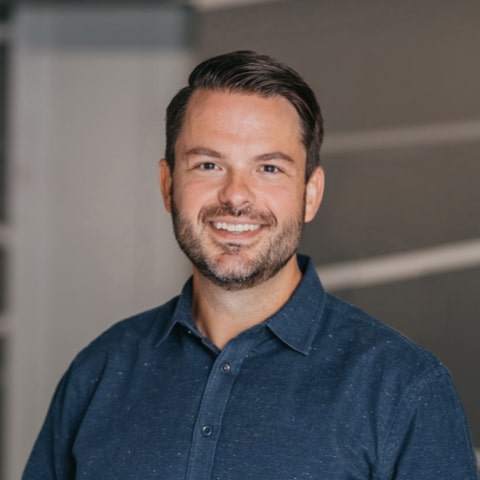
Cory Wheeler
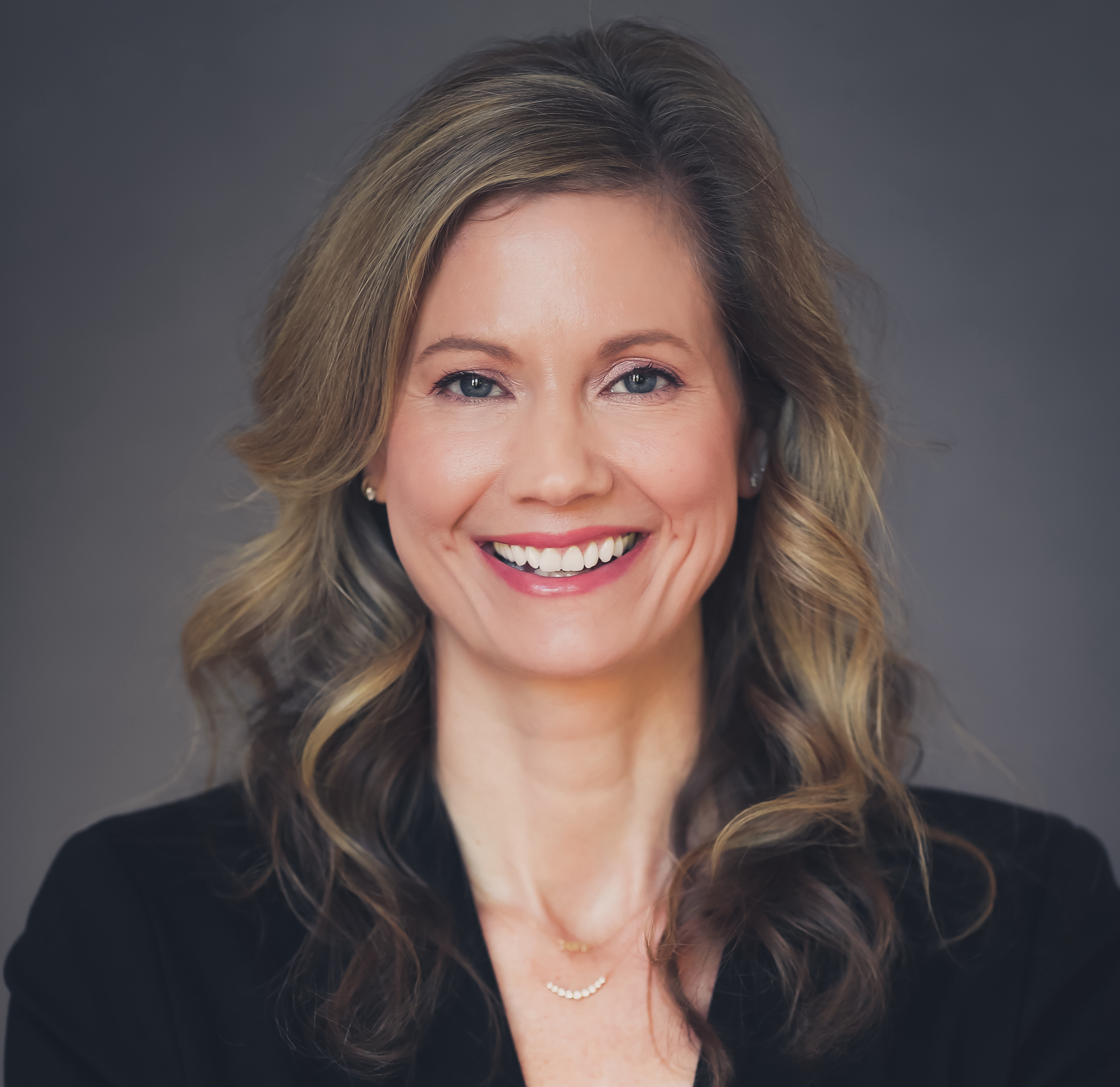
Meredith Albertson
Today's Guests


